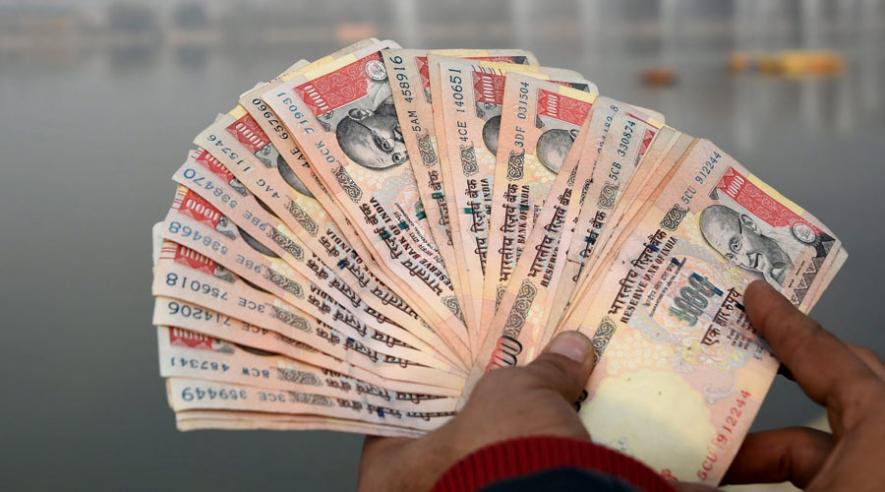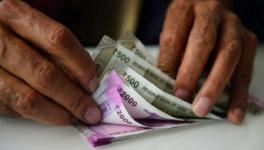Six Years Later, The Adverse Impact of Demonetisation Persists

SIX years back on November 8, the country suffered a policy-induced shock. The economy, which was coasting along at a good clip, suddenly stalled.
The most severe impact was on the most vulnerable sections, who can barely take care of themselves. They largely belong to the unorganised sector, which employs 94 per cent of all workers. It is cash-based since its operations are too small to use banking.
The cash shortage persisted for at least a year, and was acute for at least two months. This sector works with small amounts of working capital and that get exhausted when operations cease. So, it becomes difficult for them to restart once they close down for even a week. They depend on the informal markets to restart, and pay high rates of interest which cuts into their meagre incomes, thereby aggravating their poverty.
Black economy not dented
Demonetisation was premised on the incorrect notion that `black means cash’. If this was true, squeezing out cash from the economy would have put paid to the black economy. But cash comprises less than one per cent of the black wealth. So, even if all the black cash returned to the banks, it would have meant that black wealth would hardly be dented. Further, black income generation, based on under and over invoicing of transactions, would remain unaffected.
Finally, if black income generation continues, black cash would get regenerated. Anyway, all the cash came back, so even one per cent of the black wealth was not impacted. In fact, it got converted into new notes. Actually, cash in the economy has further increased, as recent data shows.
The incorrect official data shows that the economy’s rate of growth declined from 8 per cent in the fourth quarter of 2017-18 to 3.1 per cent in the fourth quarter of 2019-20. This decline in the growth of the economy actually represents the decline of the organised sector of the economy. This is a result of the continuing impact of demonetisation (and of the Goods and Services Tax) on demand.
The government’s introduction of the Rs. 2,000 denomination currency notes was strange if it wanted less cash to be available for storing black wealth. Later, it introduced electoral bonds, which have become a means of bribing the ruling party in white. Effectively, demonetisation did not curtail the black economy, which persists. The cost of this policy misstep has been high.
Shock to the economy
The official GDP (Gross Domestic Product) data does not independently measure the contribution of the unorganised sector. Largely, organised sector data is used as a proxy for measuring the contribution of the non-agriculture unorganised sector. Even for agriculture, it is assumed that the targets have been fulfilled. Actually, when there is a shock to the economy, such as demonetisation, the earlier methodology of estimating GDP becomes invalid. While the organised sector could still function using electronic means, the unorganised sector clearly declined sharply and this is not reflected in the data.
No wonder, official data shows that the year of demonetisation (2016-17) had the highest growth rate of the decade of 2010. The error in the data for 2016-17 got carried forward to the ensuing years. The unorganised sector has not recovered since then, but the GDP data does not reflect that. In brief, the official GDP data has been erroneous.
Also read: 2021-22 Q1 GDP data overestimates: Economic shocks question methodology
Further, this incorrect official data shows that the economy’s rate of growth declined from 8 per cent in the fourth quarter of 2017-18 to 3.1 per cent in the fourth quarter of 2019-20. This decline in the growth of the economy actually represents the decline of the organised sector of the economy. This is a result of the continuing impact of demonetisation (and of the Goods and Services Tax) on demand. After all, if 94 per cent of the workers face a shortfall in employment and incomes, there is bound to be an impact on demand and the economy’s growth.
The unorganised sector, in which incomes are way below the taxable limit, does not generate black incomes. So, demonetisation adversely impacted those who have nothing to do with black income generation, while those generating black incomes benefitted.
This shortage in demand reflected itself in low capacity utilisation in the organised sector. Reserve Bank of India data shows that it has hovered at around 72 percent. This in turn impacts investment, which had peaked in 2012-13 at about 36 per cent of the GDP, and declined to around 32 per cent. Even the massive cut in the corporate tax rate in 2019 did not spur greater investment in the economy. Companies used the extra profit to retire their debt rather than invest when demand was short.
Invisibilisation of the unorganised sector
The government, relying solely on the official statistics based on the organised sector data, has been claiming a robust performance of the economy and, therefore, has not deemed it necessary to initiate special measures to tackle the crisis faced by the unorganised sector. Policies have not been revamped and the crisis continues.
No wonder, unemployment has gotten aggravated, especially for the youth. Even officially, it reached a record high of 45 years before the pandemic. It remains high for youth in the age group of 15 to 29 years. Also, the more educated a person, the more the unemployment. The participation of women in the labour force has concurrently been on the decline for some time. This loss of employment and income has resulted in aggravating poverty as fewer family members find work.
Even if one goes by the official figures, the decline in the rate of growth implies that the loss of incomes is at least Rs. 10 lakh crores. If the little evidence of the decline in the unorganised sector is factored in, the rate of growth of the economy is not 7 per cent, but in negative. The loss of incomes for the unorganised sector would be a multiple of the above mentioned figure.
So, the human cost of demonetisation leading to a policy-induced crisis is enormous for vulnerable socio-economic sections. The benefits given to this section through freebies and government support is only a fraction of the losses suffered by them since demonetisation.
Also read: Demonetisation Anniversary: A review of how the Supreme Court’s inaction made it a fait accompli
Lesson for future
Even if demonetisation had succeeded in eliminating the black economy, would the cost to the unorganised sector be justified? The unorganised sector, in which incomes are way below the taxable limit, does not generate black incomes. So, demonetisation adversely impacted those who have nothing to do with black income generation, while those generating black incomes benefitted. Similarly, while the black economy weakens democracy, the current selective campaign against black incomes of the opposition leaders is weakening it far more. These are the unintended consequences of our fight against black economy, and must be avoided.
Get the latest reports & analysis with people's perspective on Protests, movements & deep analytical videos, discussions of the current affairs in your Telegram app. Subscribe to NewsClick's Telegram channel & get Real-Time updates on stories, as they get published on our website.
























